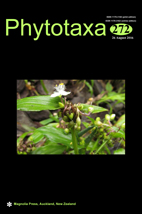Abstract
The genus Anabaenopsis comprises about 20 morphospecies distributed in plankton of tropical, subtropical and temperate regions during warm periods. The morphological diversity and population dynamics of Anabaenopsis species from one artificial shallow lake from the Province of Buenos Aires, Argentina, was studied during summer 2005 and 2006; and from April 2012 to May 2014. The most common and abundant species were identified as A. elenkinii and A. cf. cunningtonii (first report in Argentina). Anabaenopsis circularis and A. milleri (first report in the American continent and Argentina) were less common, whereas A. nadsonii was rarely observed. Almost all species contributed to algal blooms during warm periods. However, some species were registered even under the lowest temperatures recorded (7.5 °C) and sustained biovolume also during winter (A. milleri, A. elenkinii and A. cf. cunningtonii). These results indicate that some species of the genus are capable of growing at temperatures much lower than 20°C. The species richness noted in this study suggests that there is likely much more diversity remaining on this genus to be reported in Argentina.

